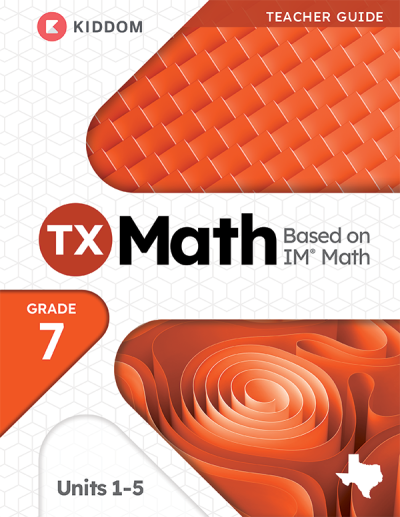Evaluation for 5.3c
Materials include supports for students in connecting, creating, defining, and explaining concrete and representational models to abstract (symbolic/numeric/algorithmic) concepts, as required by the TEKS.
In grade 7, Unit 7, "Lesson 2: Reasoning about Contexts with Tape Diagrams," the materials include supports for students in connecting, creating, defining, and explaining representational models to abstract concepts. For example, one activity in the lesson tasks students with looking at a tape diagram and connecting the diagram to abstract concepts. A second activity in the lesson tasks students with observing a tape diagram and connecting the representational model to a situation. A third activity in the lesson tasks students with creating a tape diagram to represent a situation. The Activity Narrative of "2.3: Every Story Needs a Picture" states, "In the previous activity, students interpreted given tape diagrams and explained how they represented a story. Here, they have a chance to draw tape diagrams to represent a story." Materials include supports for students in connecting, creating, defining, and explaining representational models to abstract (symbolic/numeric/algorithmic) concepts, as required by the TEKS. For example, the Activity Synthesis within grade 7, Unit 12, Lesson 8, "Activity 8.3: Filling the Sandbox" provides discussion questions that promote connecting, defining, and explaining the representational models to abstract concepts. Materials include supports for students in connecting, creating, defining, and explaining concrete and representational models to abstract (symbolic/numeric/algorithmic) concepts, as required by the TEKS. In grade 7, Unit 12, Lesson 1, "1.2: Finding Volume With Cubes," the materials include supports for students to create concrete models using snap cubes to connect to the abstract concept of volume of prisms. "If not mentioned by students, explain that calculating the total number of cubes to make the prism is the same as calculating the volume of the prism. We can find the area of the base of the prism and multiply that by the number of layers in the prism, which is the same as the height of the prism."



